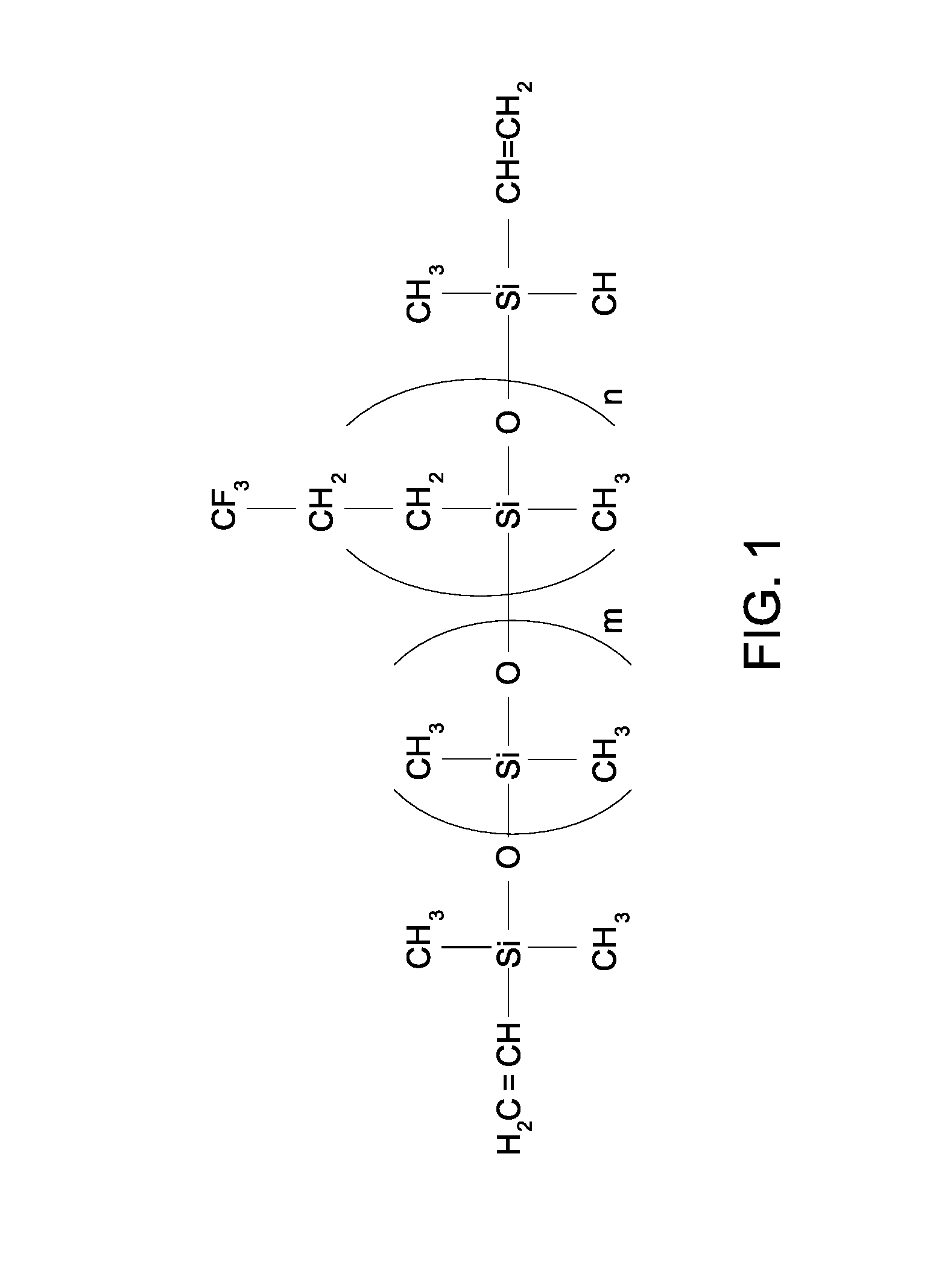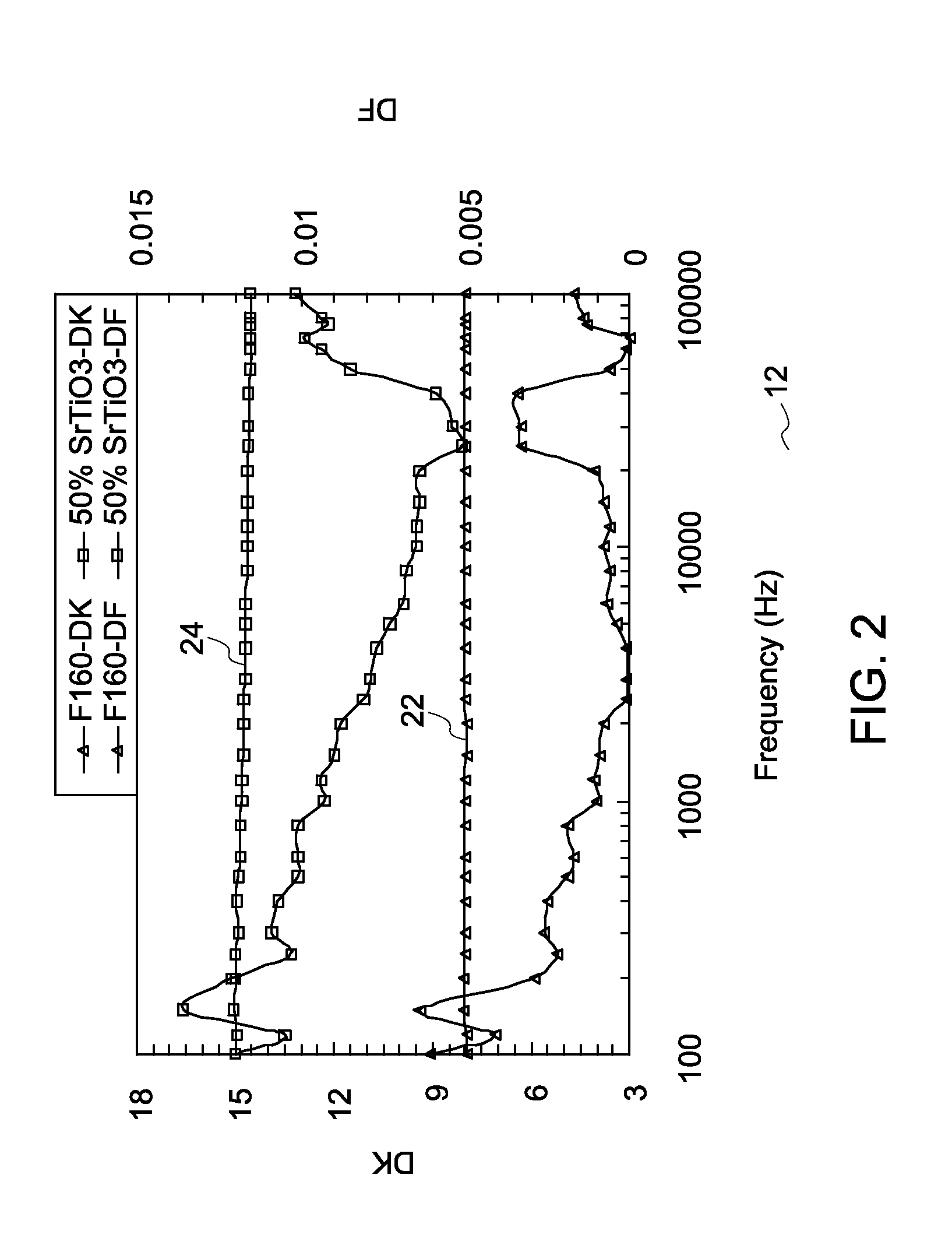Electromagnetic interference shielding polymer composites and methods of manufacture
a technology of electromagnetic interference and polymer composites, applied in the field of polymer composites, can solve the problems of device performance, total failure, and electromagnetic sensitiveness of electronic devices, and achieve the effects of high permittivity, high permittivity polymer, and effective operation over a wide range of frequencies
- Summary
- Abstract
- Description
- Claims
- Application Information
AI Technical Summary
Benefits of technology
Problems solved by technology
Method used
Image
Examples
example 1
[0035]20 grams of fluorosilicone (chemical structure shown in FIG. 1) was prepared as a base resin. Homopolymer silicone resin (with m=0 in the chemical structure shown in FIG. 1) is a gel at room temperature and was diluted in MEK (methyl ether ketone) to form 20 wt % solution. 20 g of SrTiO3 nanoparticles (with mean particle size of 40 nanometers) were dispersed into the solution with high shear mixing. (Note: If sonication is preferred for better particle dispersion, the resin needs to be diluted further with MEK to adjust the viscosity to ˜30 cps.) The silicone resin was cured by adding 5 wt % peroxide (dicumyl peroxide) with good mixing. The solvent was evaporated under vacuum and silicone resin was cured at 180° C. for 2 hours. As an exemplary alternative, the silicone resin may be cured by adding 1.2 wt % silicone hydride and 4 ppm Pt catalyst, followed by solvent evaporation at room temperature under vacuum and 180° C. curing for 30 min. The dielectric permittivity (Dk) and ...
example 2
[0036]100 grams of tetraglycidyl methylene dianiline epoxy resin was pre-heated to 80° C. to reduce the viscosity to 12O19 powder with particle size of less than 100 nanometers was dispersed into the epoxy resin with high shear mixer. After vacuum degassing, the sample was thermally cured at 180° C. for two hours. The magnetic permeability of the composite is plotted in FIG. 3 as a function of frequency and dielectric permittivity and dielectric loss factor are plotted in FIGS. 4 and 5, respectively. The plots show the magnetic permeability and dielectric permittivity of the composite are in the optimal range for EMI absorbing applications.
PUM
| Property | Measurement | Unit |
|---|---|---|
| Percent by volume | aaaaa | aaaaa |
| Percent by volume | aaaaa | aaaaa |
| Percent by volume | aaaaa | aaaaa |
Abstract
Description
Claims
Application Information
 Login to View More
Login to View More - R&D
- Intellectual Property
- Life Sciences
- Materials
- Tech Scout
- Unparalleled Data Quality
- Higher Quality Content
- 60% Fewer Hallucinations
Browse by: Latest US Patents, China's latest patents, Technical Efficacy Thesaurus, Application Domain, Technology Topic, Popular Technical Reports.
© 2025 PatSnap. All rights reserved.Legal|Privacy policy|Modern Slavery Act Transparency Statement|Sitemap|About US| Contact US: help@patsnap.com



